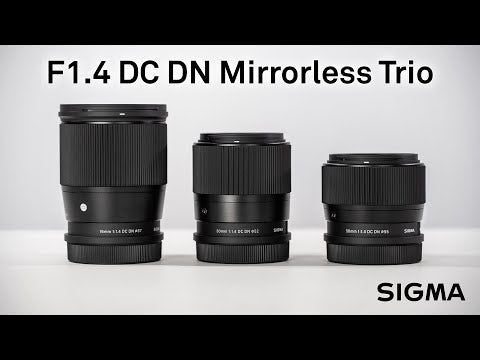What we think...
Product Description
Sigma 30mm f1.4 DC DN Contemporary Lens
- APS-C Format
- 45mm (35mm Equivalent)
- Aperture Range: f/1.4 to f/16
- Two Aspherical Elements
- One High-Refractive Index Element
- Super Multi-Layer Coating
- Stepping Motor AF System
- Rounded 9-Blade Diaphragm
A fast, versatile prime, this 30mm f/1.4 DC DN Contemporary Lens from Sigma is designed for use with APS-C-format Sony E-mount mirrorless cameras. The bright f/1.4 maximum aperture benefits working in low-light conditions and also affords extensive control over depth of field for using selective focus techniques.
The optical design features a pair of aspherical elements, along with one high-refractive index element, which significantly reduce spherical aberrations and distortion for increased clarity and definition for notably sharp image quality. Also, a Super Multi-Layer Coating has been applied to control lens flare and ghosting in strong lighting conditions. Additionally, benefitting both stills shooting and video recording, this compact prime also incorporates a stepping AF motor for smooth, near-silent autofocus performance.
As part of the Contemporary line within Sigma's Global Vision series, this lens is designed to achieve a balance between convenience and performance, and meshes a compact, lightweight build and versatile handling with notable optical attributes.
Normal-length prime is designed for APS-C-format Sony E-mount mirrorless cameras and provides a 45mm equivalent focal length.
Bright f/1.4 maximum aperture excels in low-light conditions and also affords increased control over depth of field for achieving selective focus effects.
Two aspherical elements and one high-refractive index element are used to limit distortion and spherical aberrations and also contribute to greater overall sharpness and accurate rendering.
A Super Multi-Layer Coating has been applied to lens elements in order to minimize lens flare and ghosting and contribute to producing contrast-rich and color-neutral imagery, even in backlit conditions.
A stepping AF motor benefits both photographers and videographers with its fast, precise, and near-silent performance.
Rounded nine-blade diaphragm contributes to a smooth and pleasing bokeh quality.
Constructed using a Thermally Stable Composite (TSC) material for greater precision and use in wide temperature variations. Additionally, a brass bayonet affords improved mounting accuracy and rigidity.
For full specifications click Here

























